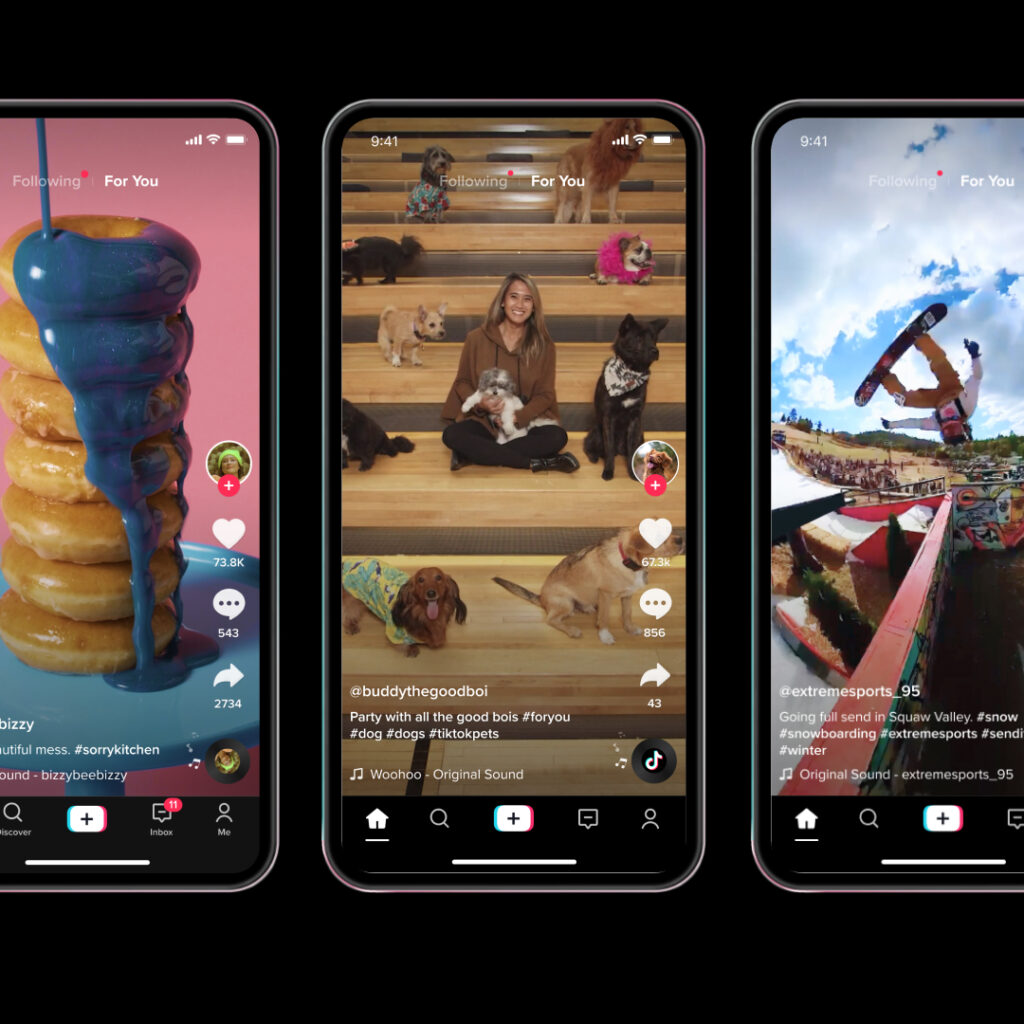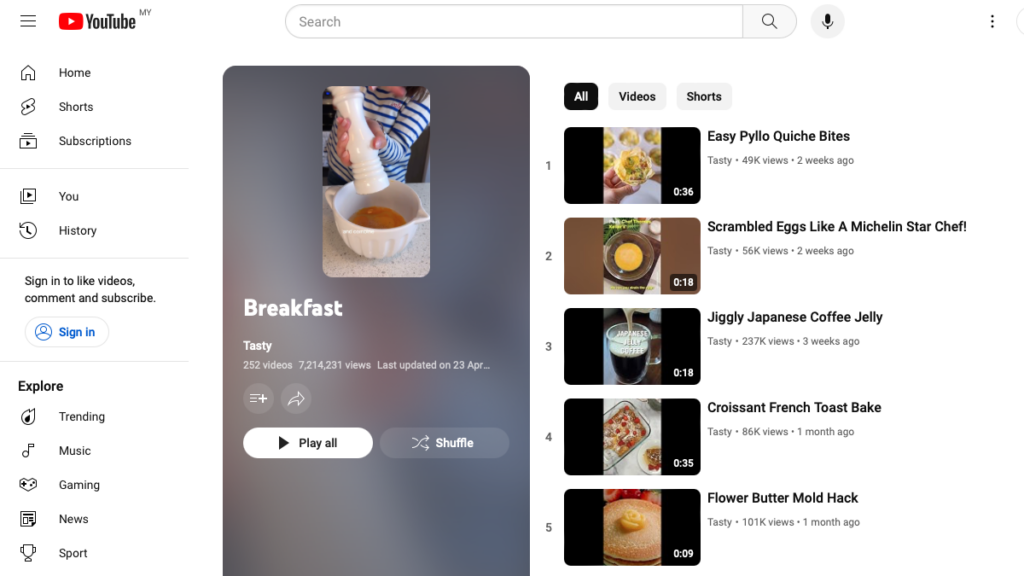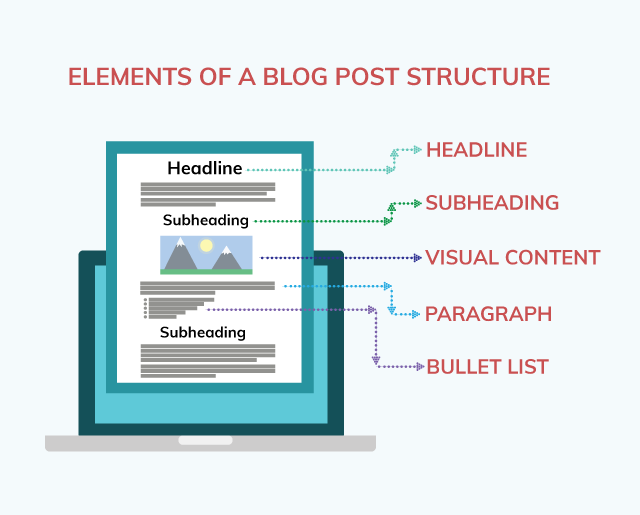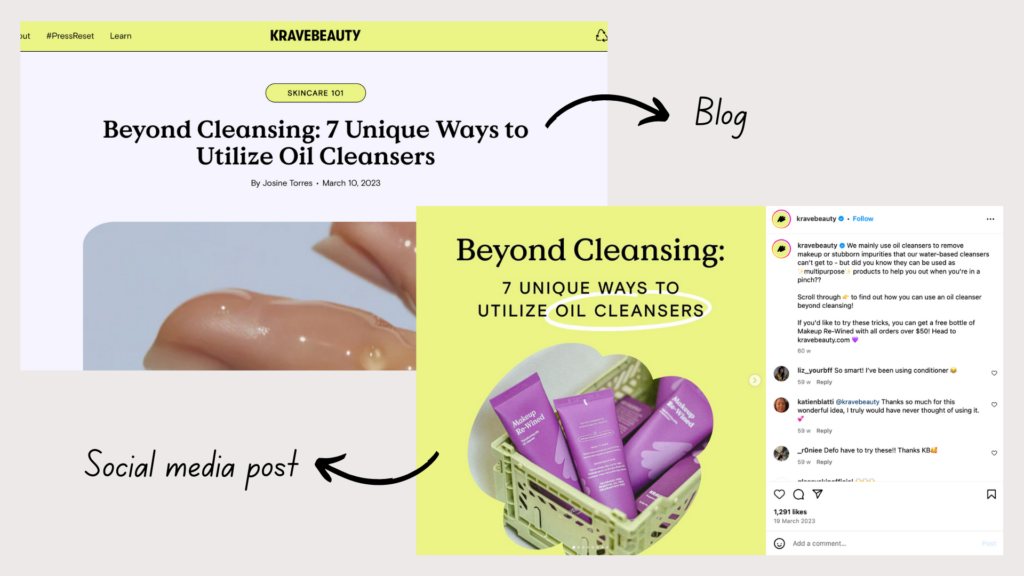
Did you know that according to Global WebIndex, 62.3% of the world’s population uses social media, and the average daily usage is 2 hours and 23 minutes. In this age of information overload, grabbing and holding attention is a constant battle.
As creators, we all want to engage our audience and deliver valuable content. But with so much competition, the format we choose becomes crucial. On one hand, we have short-form content – bite-sized pieces of information perfect for busy audiences on the go. Think social media posts, infographics, or quick explainer videos. On the other hand, long-form content offers a deep dive into topics, establishing expertise and building trust. This includes in-depth blog posts, comprehensive ebooks, or insightful white papers.
The truth is, there’s no one-size-fits-all answer. The best format depends on your audience, your goals, and the message you want to convey. By understanding the strengths and weaknesses of both short-form and long-form content, you can make informed decisions that maximize your content’s impact. This guide will equip you with the knowledge to navigate the content landscape, choose the right format for every situation, and ultimately, achieve your content creation goals.
Table of Contents
Short-Form Content
Short-form content reigns supreme in today’s fast-paced digital world. Think catchy tweets, visually engaging Instagram stories, or attention-grabbing TikTok videos. These bite-sized pieces of information are designed to be consumed quickly and easily, making them ideal for busy audiences with fleeting attention spans.
But let’s delve deeper and explore the reasons why short-form content is so popular, and the strategies for creating truly impactful pieces.

Advantages of Short-Form Content
Easier Consumption
Let’s face it, attention spans are shrinking. Short-form content caters to busy audiences who crave information in quick, digestible chunks. It’s ideal for people on the go, checking their phones during commutes or breaks.
Mobile-Friendly
The rise of smartphones and tablets has transformed how we consume content. Short-form content is perfectly optimized for these devices, allowing viewers to engage with your message anytime, anywhere.
Shareable and Snackable
The beauty of short-form content lies in its shareability. A funny meme can be easily retweeted, an eye-catching infographic can be readily saved and shared, and a captivating explainer video can go viral in a matter of hours. This virality allows creators to reach a wider audience organically.
Cost-Effective and Scalable
Compared to long-form content, short-form pieces typically require less time and resources to create. This allows you to produce a higher volume of content consistently, keeping your audience engaged and your social media channels active.
Disadvantages of Short-Form Content
Limited Information Depth
Due to its brevity, short-form content might struggle to delve deeply into complex topics. It’s excellent for introducing ideas or sparking curiosity, but it may not provide enough detail to educate or persuade audiences on intricate subjects.
Lower SEO Value
Search engines favor content with greater depth and keyword density. While short-form content can be SEO-optimized, it generally carries less weight in search engine rankings compared to long-form pieces.
Repetitive Consumption
The constant stream of short-form content can lead to information overload. Viewers might find themselves consuming large quantities of content without retaining much of it.
Best Practices for Short-Form Content
Captivating Headlines and Visuals
First impressions matter! Craft headlines that grab attention and visuals that pique viewers’ curiosity. Use strong verbs, relevant keywords, and high-quality images or videos to make your content stand out in the crowded online space.
You probably already use these strategies on social media, but they work great for press releases too. For more tips on writing effective press releases, check out this guide on the best press release examples for every occasion.
Clear, Concise Writing
When every word counts, ensure your writing is clear, concise, and delivers value quickly. Get straight to the point and avoid unnecessary fluff. Focus on a single key message and make sure it’s communicated effectively within the limited word count. The ideal length for short-form content ranges from 50 to 1,000 words, ensuring quick consumption and engagement.
Call to Action
Don’t leave your viewers hanging! Include a clear call to action (CTA) at the end of your short-form content. This could be encouraging viewers to visit your website, subscribe to your channel, or learn more about your product or service.
Examples of Effective Short-Form Content:
- Social media posts with tips and tricks: Share bite-sized pieces of valuable advice relevant to your audience.
- Eye-catching infographics: Present complex data in a visually appealing and easily understandable format.
- Short explainer videos: Demonstrate a process, answer a common question, or introduce a new product in a concise and engaging video.
Short-form content’s ability to capture attention quickly and drive social media engagement is perfectly exemplified by Buzzfeed Tasty’s rise to fame. Their eye-catching visuals and step-by-step recipe breakdowns captured attention within seconds, making complex dishes appear approachable. The “Tasty” brand expanded beyond social media, spawning cookbooks and a dedicated video platform, demonstrating the power of short-form content to drive brand awareness and audience engagement.

Long-Form Content
Long-form content has been a mainstay of content marketing for a reason. While short-form excels at quick engagement, long-form content offers a different set of advantages.
Advantages of Long-Form Content
Comprehensive Information
Unlike its short-form counterpart, long-form content allows for a deep dive into topics. It typically exceeds 1,000 words; with this extended format, you can explore complex issues in detail, providing valuable insights and establishing yourself as an authority in your field.

Improved SEO Ranking
Search engines prioritize content with greater depth and keyword density. Long-form content allows you to naturally incorporate relevant keywords and create a comprehensive resource that search engines can easily crawl and index. This can significantly improve your website’s ranking in search results, driving organic traffic.
Enhanced User Experience
By offering a thorough exploration of a topic, long-form content builds trust and loyalty with your audience. They perceive you as a reliable source of knowledge, enhancing their overall user experience.
Lead Generation Potential
Long-form content, especially in the form of ebooks or white papers, can serve as valuable lead magnets. By offering in-depth information in exchange for contact details, you can attract high-quality leads interested in your expertise.
Disadvantages of Long-Form Content
Time and Resource Investment
Creating long-form content requires more research, writing, and editing compared to short-form pieces. This can be a significant investment of time and resources.
Reader Commitment
Long-form content demands more focus and dedication from your audience. With shorter attention spans, there’s a risk of higher bounce rates if your content isn’t engaging or well-structured.
Risk of Information Overload
It’s easy to get carried away with details. Long-form content needs to be well-structured and strategically presented to avoid overwhelming your readers and losing their interest.
Best Practices for Long-Form Content
Compelling Introduction and Conclusion
Hook your readers from the start with a captivating introduction that sets the stage for the topic. Similarly, conclude with a strong takeaway that summarizes your key points and leaves a lasting impression.
Clear Structure and Navigation
Organize your content logically using headings, subheadings, and bullet points. This helps readers navigate easily and identify specific sections of interest.

Multimedia Integration
Break up text with relevant images, videos, infographics, or even audio clips. This keeps readers engaged and enhances their understanding of complex topics.
Internal Linking and SEO Optimization
Optimize your long-form content for relevant keywords and strategically link to related content on your website. This improves user experience and helps search engines understand the overall context of your content.
Examples of Effective Long-Form Content:
- In-depth blog posts: Provide detailed guides, tutorials, or comprehensive explanations of complex topics.
- Comprehensive ebooks: Offer valuable industry insights, research findings, or actionable strategies in a downloadable format.
- White papers: Establish your thought leadership by presenting research findings, data analysis, and expert opinions on industry trends.
HubSpot’s downloadable Inbound Marketing Guide is a powerful example of long-form content used for lead generation. This comprehensive guide established them as thought leaders in the inbound marketing space. By offering valuable, actionable content in exchange for contact information, HubSpot generated leads and nurtured potential customers, showcasing the power of long-form content for lead generation.
Choosing the Right Format
Now that you understand the strengths and weaknesses of both short-form and long-form content, the real power lies in making informed choices. Here’s how to strategically select the format that best aligns with your content goals.
Consider Your Audience
First and foremost, understand your target audience. Consider their content consumption habits. Are they constantly on the go or do they dedicate time for deeper dives?

Align with Your Goals
What are you hoping to achieve with your content? Are you aiming to build brand awareness (short-form might be ideal), generate leads (long-form ebooks can be powerful), or establish yourself as an industry expert (in-depth blog posts can showcase your knowledge)?
Tailoring to Mediums
Consider the medium through which your content will be delivered when choosing between formats. For platforms like X (formerly Twitter) or Instagram where space is limited, opt for short-form content that conveys key messages concisely. In contrast, platforms like blogs or newsletters provide more room for detailed exploration, making them ideal for long-form content.

Mix Up Your Content
Don’t limit yourself to one format. Develop a content mix that leverages the strengths of both short-form and long-form content. Use short-form pieces to pique interest and drive traffic to your long-form content, which provides in-depth information and conversion opportunities.
Furthermore, maximize the value of your content by repurposing it across different formats. For example, transform a long-form blog post into bite-sized social media snippets or create an infographic summarizing key points from an ebook.
By understanding your audience and aligning your content goals with the chosen format, you can create a strategic content marketing plan that resonates with your target audience and drives results.
A prime example is Dollar Shave Club — they leveraged both short-form and long-form content in their content strategy. Their viral marketing videos (known for their edgy humor) grabbed attention and sparked brand awareness on social media. Their website provided detailed product information, customer reviews, and subscription options, converting that initial spark into sales. This multi-format approach exemplifies the power of a strategic content marketing plan.
Conclusion
In today’s content-saturated world, the battle for attention is fierce. This guide has explored the strengths and weaknesses of both short-form and long-form content, equipping you with the knowledge to make informed decisions about your content strategy.
Here’s a quick recap:
- Short-form content excels in grabbing attention, driving social media engagement, and delivering quick information bursts. However, it may lack depth and struggle with SEO ranking.
- Long-form content allows for deep dives into topics, establishing authority, and providing valuable resources. It can improve SEO and lead generation but requires a bigger time investment and risks overwhelming readers.
The key takeaway? There’s no single best format. The optimal choice depends on your audience and your goals.
Embrace experimentation! Track your content performance and see what resonates with your audience. Develop a content mix that strategically utilizes both short-form and long-form pieces, and repurpose your content for maximum impact.
Remember, the ultimate goal is to create compelling content that engages your audience, delivers value, and achieves your content marketing objectives. By following these insights, you can navigate the content landscape with confidence and establish yourself as a thought leader in your niche.
Related Article:
The following article may contain the author’s opinions and interpretations of the subject matter. Any of the products, services, or platforms mentioned is not sponsored or affiliated.
Featured image was created with the assistance of DALL·E by ChatGPT
